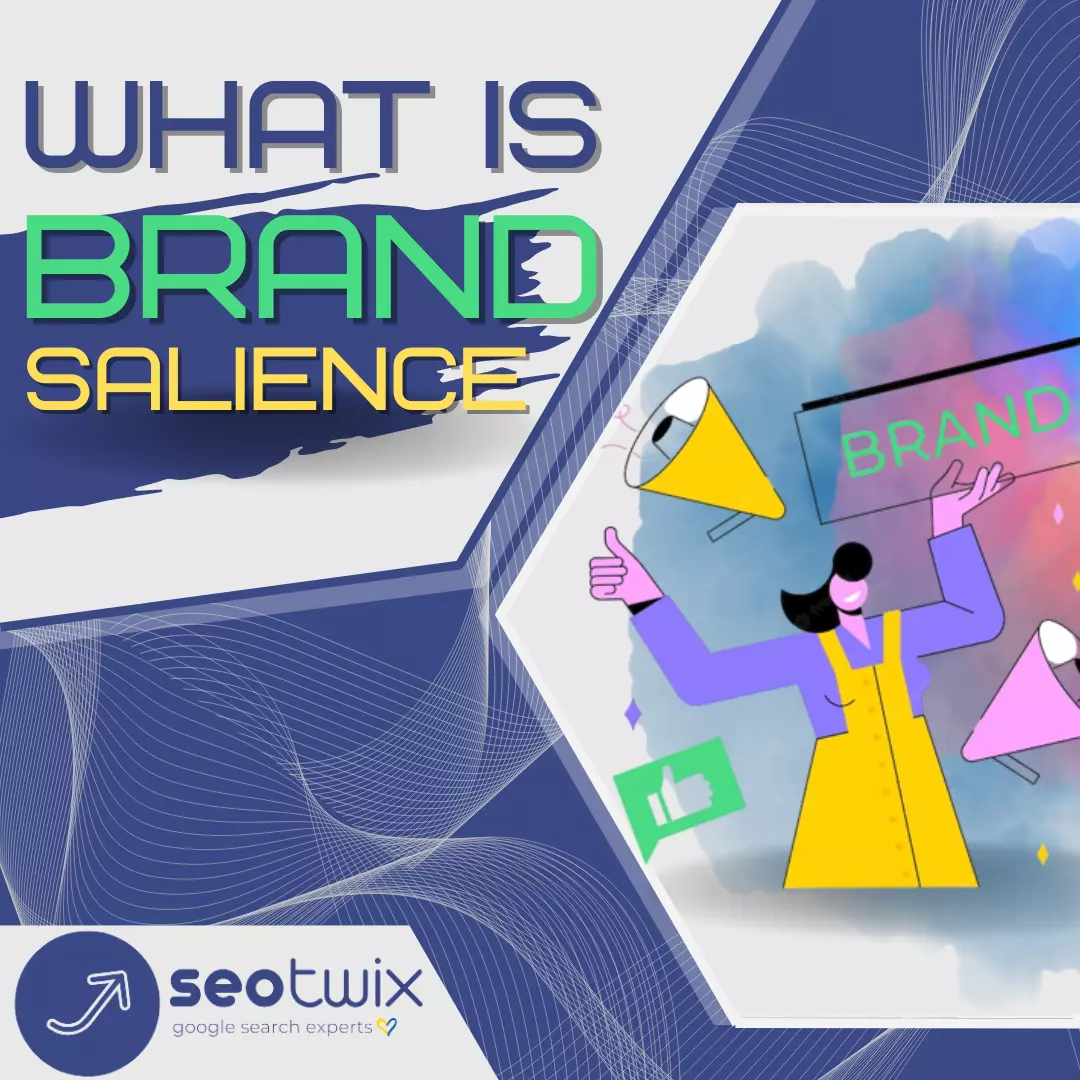
In today’s competitive business landscape, having a recognizable brand is vital for success. With countless options available to consumers, companies must stay top-of-mind and stand out from the crowd. This is where brand salience comes into play. Brand salience refers to the degree to which a brand is thought of or noticed by consumers when they consider a particular product category. It’s all about being at the forefront of consumers’ minds when they think about a specific industry or product.
The concept of brand salience was popularized by marketing guru Byron Sharp and his groundbreaking book, “How Brands Grow.” According to Sharp, increasing brand salience is one of the key drivers of brand growth. Brands that are easily recalled and recognized by consumers have a higher chance of being chosen and recommended, leading to increased market share and long-term success.
What is Brand Salience?
Brand salience refers to the prominence and awareness of a brand in consumers’ minds when they consider a particular product category.
It is the degree to which a brand stands out and is easily recognized and recalled by consumers concerning its competitors. In essence, brand salience is about being at the forefront of consumers’ thoughts and being top-of-mind when they think about a specific industry, product, or service.
Brand salience goes beyond mere brand awareness, which focuses on whether consumers recognize a brand’s name or logo. While awareness is important, brand salience takes it a step further by examining the depth and strength of the brand’s presence in consumers’ minds. It involves the brand’s ability to create strong associations, evokes positive emotions, and be readily recalled when consumers are considering a purchase or making a decision in a specific product category.
When a brand has high salience, it enjoys several advantages. Firstly, it increases the likelihood of the brand being chosen when consumers are making purchasing decisions. With so many options available, brands that are easily recalled have a competitive edge. Secondly, brand salience influences brand recommendations. Consumers are more likely to recommend and advocate for top-of-mind brands, further amplifying the brand’s reach and influence. Lastly, brand salience contributes to long-term brand growth by increasing market share and establishing a loyal customer base.
Brand salience is not solely dependent on the size or budget of a brand. It is a result of strategic branding efforts, consistent messaging, and meaningful interactions with consumers.
What is the difference between Brand Salience and Brand Awareness?
Brand awareness and brand salience are two sides of the same coin in marketing, but they represent different stages in the customer journey.
Brand awareness is all about how well people recognize your brand. It’s the broader concept, like how many people have heard of your company or seen your logo. Think of it as the initial name recognition. This can happen anywhere – through advertising, social media mentions, or even just seeing someone with your product.
Brand salience is a step deeper. It’s about being top-of-mind at the crucial moment when a customer is making a purchase decision. Brand salience means your brand is the one that pops into the consumer’s head when they need something in your category. This is a more powerful type of awareness, because it translates into direct action.
Here’s an analogy: Imagine you’re going to the grocery store for cereal. Many brands are probably aware of you (because you’ve seen their commercials), but only a couple might be salient (the ones you seriously consider buying).
So, brand awareness is a stepping stone to brand salience. You want people to be aware of your brand, but ultimately you want them to think of you when it’s time to buy.
Why is Brand Salience important?
It helps your brand stand out in a crowded market. With numerous choices available to consumers, a brand that consistently appears in their minds has a higher chance of being considered and chosen.
Also brand salience plays a vital role in building customer trust and loyalty. When your brand consistently delivers on its promises and maintains a strong presence, it creates a sense of reliability and familiarity. This fosters trust among consumers, leading to loyalty and repeat purchases. Loyal customers who have a strong connection with your brand are also more likely to become brand advocates, spreading positive word-of-mouth recommendations.
Brand salience also increases brand recall and recognition. By creating strong associations and memorable brand elements, your brand becomes more easily recalled by consumers when considering a particular product or service. This gives you a competitive advantage in a crowded market, as consumers are more likely to notice, remember, and recognize your brand amidst a sea of competitors.
In addition, brand salience amplifies brand advocacy and word-of-mouth. When your brand consistently delivers exceptional experiences and resonates with consumers, they become more inclined to share their positive experiences with others. This word-of-mouth promotion from satisfied customers is highly influential in shaping consumer perceptions and choices, further enhancing your brand’s reputation and reach.

Ultimately, brand salience contributes to long-term growth and success. Brands with high salience have a greater chance of expanding their market share, attracting new customers, and retaining existing ones. Let’s go through 10 steps to increase your brand salience.
How to improve Brand Salience?
The most important aspect here is building a strong brand presence and capturing consumer attention in today’s competitive market.
Here are ten steps you can take to enhance your brand salience and make a lasting impression on your target audience:
-
Define Your Brand Identity
Clearly define your brand's core values, mission, and unique selling propositions. This clarity will form the foundation of your brand's identity and help you stand out in the market.
-
Conduct Market Research
Gain a deep understanding of your target audience's preferences, behaviors, and needs. This knowledge will allow you to tailor your brand messaging and positioning to resonate with your ideal leads.
-
Develop a Consistent Brand Voice
Create a distinct and consistent brand voice that aligns with your brand identity. This voice should be reflected in all your communication channels, from your website and social media to advertising campaigns and customer interactions.
-
Create Compelling Brand Stories
Stories have a powerful impact on human emotions and memory. Develop compelling brand narratives that connect with your audience on an emotional level, making your brand more memorable and relatable.
-
Create a Memorable Visual Identity
Invest in creating a visually appealing and cohesive brand identity. This includes designing a memorable logo, selecting a consistent color palette, and using visually engaging graphics across all brand touchpoints.
-
Consistency Across Channels
Ensure consistency in your brand messaging and visual elements across all channels, including your website, social media platforms, offline marketing materials, and customer interactions. This consistency reinforces your brand's identity and helps consumers recognize and remember your brand more easily.
-
Start Influencer Marketing
Collaborate with influencers or thought leaders who align with your brand values and have a significant reach in your target market. Their endorsement and promotion of your brand can boost brand salience and attract new audiences.
-
Use Social Media
Actively engage with your audience on social media platforms. Share valuable content, respond to customer queries and feedback, and participate in relevant conversations. Building a strong social media presence can enhance brand salience and foster a sense of community around your brand.
-
Personalize the Customer Experience
Tailor your interactions and offerings to meet the individual needs and preferences of your customers. By providing personalized experiences, you create a deeper connection with consumers, increasing brand salience and fostering customer loyalty.
-
Monitor and Adapt
Analyze the data and make necessary adjustments to optimize your approach and stay relevant in an ever-evolving market.
By following these ten steps, you can improve your brand salience and create a lasting impression on your target audience. Remember, building brand salience is an ongoing process that requires consistent effort and adaptation to effectively engage and resonate with your customers.
How to measure Brand Salience?
Measuring brand salience is crucial for understanding the effectiveness of your branding efforts and evaluating your brand’s position in the minds of consumers. Here are some key approaches to measuring brand salience:
Brand Recall
Brand recall measures the ability of consumers to spontaneously remember your brand when prompted with a product category or specific cue. This can be assessed through surveys or interviews where respondents are asked to recall brands within a particular industry or when presented with specific stimuli. By analyzing the percentage of respondents who correctly recall your brand, you can gauge the level of brand salience you have achieved.
Brand Recognition:
Brand recognition focuses on assessing consumers’ ability to identify your brand when presented with options or stimuli. In this approach, respondents are shown a list of brands, including yours, and are asked to identify the brands they are familiar with or have encountered before. By analyzing the percentage of respondents who correctly recognize your brand, you can evaluate the level of brand salience and the extent to which consumers are familiar with your brand.
Brand Association:
Brand association measurement examines the strength and nature of the associations consumers have with your brand. This can be done through qualitative research methods such as focus groups or in-depth interviews, where participants are asked about their perceptions, emotions, and thoughts related to your brand. By analyzing the qualitative data, you can gain insights into the specific attributes, values, or emotions that are strongly associated with your brand, indicating the level of salience your brand has achieved in these areas.
Purchase Intent:
By measuring consumers’ preference for your brand over competitors and their intention to purchase from your brand, you can infer the level of salience your brand holds in their minds. Surveys and experiments can be conducted to gauge consumers’ preferences and purchase intentions, helping you understand the impact of brand salience on consumer behavior.
Market Share & Growth:
Monitoring market share and business growth can provide insights into the effectiveness of your brand salience efforts. If your brand is consistently gaining market share and outperforming competitors, it indicates that your brand is resonating with consumers and maintaining a strong position in the market. By analyzing sales data, market research, and financial performance, you can assess the impact of brand salience on business outcomes.
Social Media and Online Presence:
Monitoring social media mentions, engagement and online presence can provide real-time indicators of brand salience. Analyzing metrics such as the number of brand mentions, shares, likes, and comments across social media platforms helps gauge the level of consumer engagement and awareness of your brand. Online analytics tools can provide valuable insights into website traffic, search engine rankings, and online visibility, indicating the extent of your brand’s digital salience.

Keep in mind that brand salience measurement should be an ongoing process, allowing you to track changes and trends over time. Combining multiple measurement approaches provides a more comprehensive understanding of brand salience, allowing you to identify areas for improvement and make informed branding decisions.
Watch the YouTube video about the ways to grow your brand salience recorded by by Brand Master Academy.



